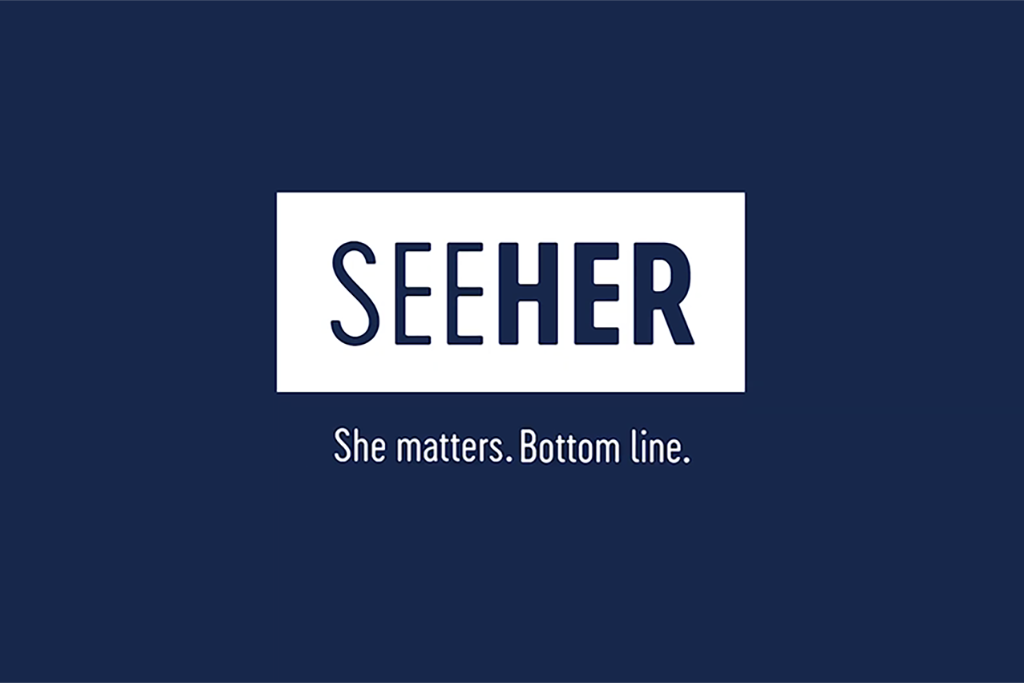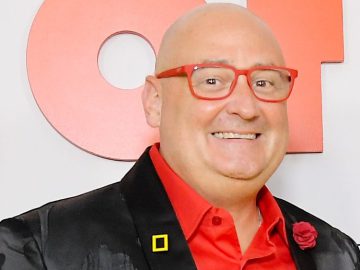Advertising hasn’t overcome its gender bias issue yet.
According to the Geena Davis Institute, 25% of ads feature only men, while only 5% of ads feature only women on screen.
But younger generations, including Gen Z and Gen Alpha, are already expecting more from marketers — and gender equity initiative SeeHer is aiming to inspire marketers to better understand their needs.
At a New York City event Wednesday, SeeHer officially unveiled its first TV spot — a 30-second ad that depicts the newest generation of Gen Alpha as strong, confident and resourceful girls who are expected to be “powerhouses” for brands. SeeHer also announced its first health and wellness guide designed specifically for healthcare marketers.
SeeHer is a global initiative started by the ANA in 2016 that champions the positive representation of women and the elimination of gender bias in marketing, media, and entertainment.
‘She Matters: Bottom Line’
SeeHer’s new campaign is called “She Matters: Bottom Line” and underscores the reality that Gen Alpha girls are expected to hold significant spending power for brands. The campaign was created pro-bono by Cincinnati-based independent agency Curiosity, which is also a SeeHer member.
Gen Alpha is expected to generate economic spending power of $5.46 trillion by 2029, according to SeeHer. And they’re going to be choosy in how they spend money: As the most diverse generation in the U.S. yet, Gen Alpha will be searching for brands that highlight female empowerment, personal growth and self-realization.
“The past few years have proven that women and girls have huge economic power and we needed to make that clear in our work,” noted Jane Manchester, creative director at Curiosity. “We set out to convey that message — to have these young empowered girls boldly and defiantly staring down camera, saying ‘You’re going to represent us right.’”
The ad features young girls running their own businesses – from a lemonade stand to cutting grass – then spending their hard-earned money on their favorite brands.
The ultimate takeaway for marketers is that brands can unlock some of Gen Alpha’s spending power if they speak to the audience in the most targeted and unbiased way.
“Gen Alpha girl attitudes about themselves should inform how you portray them,” said Christine Guilfoyle, president of SeeHer. “Confident, equal, outspoken, brave — and they want messaging to be age-appropriate.”
“The ad targets marketers to understand that [Gen Alpha] is here,” Guilfoyle added. “They matter. And they’re going to make or break your business.”
Boosting female representation in pharma: Abbott
SeeHer was originally launched in 2016 by Association of National Advertisers (ANA) to boost female representation in media and marketing and ensure the accurate portrayal of women in ads. One of its resources, called the Gender Equality Measure (GEM), is a data-driven methodology that can help pinpoint gender bias in ads.
Abbott is one of the players in the pharma industry who has picked up GEM to complement its efforts to target women better in its marketing. Accurate female representation doesn’t just mean casting women as characters in ads; it means ensuring representation across pre-production, production and post-production.
“Health is experienced differently by every individual — and identity, geography, race, age, gender, disability all play a role in that,” said Brad Santeler, senior director, marketing management at Abbott, during the event. “We want to understand the barriers that keep [people] from accessing health and the cultural realities of that.”
He referenced Abbott’s campaign that launched earlier this year that incorporated some of the insights from Gem and homed in on the idea of translating the language of health.
“Every marketer is trying to break away from the average we see in advertising,” he said. “Women want to see their stories in your stories.”
A new guide for healthcare marketers
SeeHer’s latest initiative aimed at distilling some of these insights is its new Health & Wellness guide, which gathers best practices for representing women in healthcare marketing.
According to SeeHer, women are the key decision-makers in 80% of healthcare choices, yet still feel there’s a lack of realistic portrayals of women in ads. More than 50% of women report wanting more accurate representation of themselves in healthcare marketing.
Guilfoyle pointed to a common issue in healthcare marketing where ads often depict unrealistic scenes like “healthy people skipping down a beach, staring lovingly into each other’s eyes” when it’s marketing a drug for stage four metastatic breast cancer.
“The nuances, the emotions, the weight that consumers are experiencing in symptoms or diagnoses aren’t coming through [in those cases],” Guilfoyle said.
The new guide is designed to close that gap. In it, marketers can learn about a woman’s entire health journey from teenagehood to older adult — across menstruation, pregnancy, perimenopause and menopause.
It also offers tips on how marketers can infuse the creative development process with these best practices, including paying attention to things like character development, music, clothing, environments that reflect lived experiences. It also encourages ensuring women are represented as scriptwriters, camerapersons and directors.
The goal, Guilfoyle said, is for marketers to help break down stereotypes and bias in healthcare in order to remove the “lack of humanity” and dismissiveness female patients often experience in the doctor’s office.
“My personal hope is that women, as patients, regardless of their age, are given the respect and the listening ears that they deserve,” she said.





